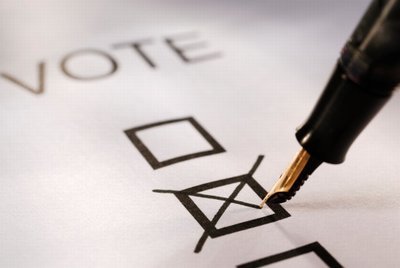Texas’s spring 2012 primary ballot will include a proposition asking Republican voters if the state should fund K-12 education by attaching money directly to each student, rather than school districts or agencies.
The State Republican Executive Committee votes in the December before each spring primary on propositions to include on the ballot. They use these propositions to gather support for policy issues facing the legislature; the propositions do not directly affect Texas law.
“I think [the school choice proposition] will pass overwhelmingly, and I think the state of Texas, if it passes, will see more pressure on the legislature to get it done,” said David Bellow, an SREC representative from Senate District 3.
Target: Savings and Freedom
The education proposition, titled “School Choice,” is as follows:
“The state should fund education by allowing dollars to follow the child instead of the bureaucracy, through a program which allows parents the freedom to choose their child’s school, public or private, while also saving significant taxpayer dollars.”
Currently, Texas funds state education primarily through pooled property taxes distributed throughout the school districts. The state also receives education tax money from the federal government and grant organizations, according to the Texas Education Agency’s website.
The proposition intentionally does not contain a specific plan for state education funding so the state legislature can work out the details, Bellow said. He said he hopes the proposition will send this main message: “Money should follow the students.”
Getting ‘Bang for the Buck’
The concern over Texas’ current education funding is how efficiently tax money contributes to a Texas student’s education, said James Golsan, a policy analyst for the Texas Public Policy Foundation.
“We want to make sure we are getting as much bang for our buck as possible,” he said. “The school choice [proposition], we feel, will introduce more competition to schools.”
More competition means a higher level of education for students, Golsan said, because with more competition schools have to focus on attracting students through increased excellence to earn their funding.
Choice and Charter Schools
Students should be able to attend whatever school best fits their learning needs, Bellow said. Not tying funds to individual children means Texas charter schools currently receive less state education funds than traditional schools, he notes.
More than 130,000 students are enrolled in 482 Texas charter campuses, according to the Texas Charter Schools Association. Slightly less than 5 million students are enrolled in 8,435 Texas public schools.
The number of Texas charter schools is currently capped at 215. Once a school is established, however, it may create other campuses. The cap has hampered Texas’ charter school growth, said Josie Duckett, a TCSA spokeswoman.
The Texas legislature meets every other year, so it will not discuss school funding or charter limits until 2013.
“Hopefully, next session things will be different in Texas,” Duckett said.
Image by Erik Hersman.




